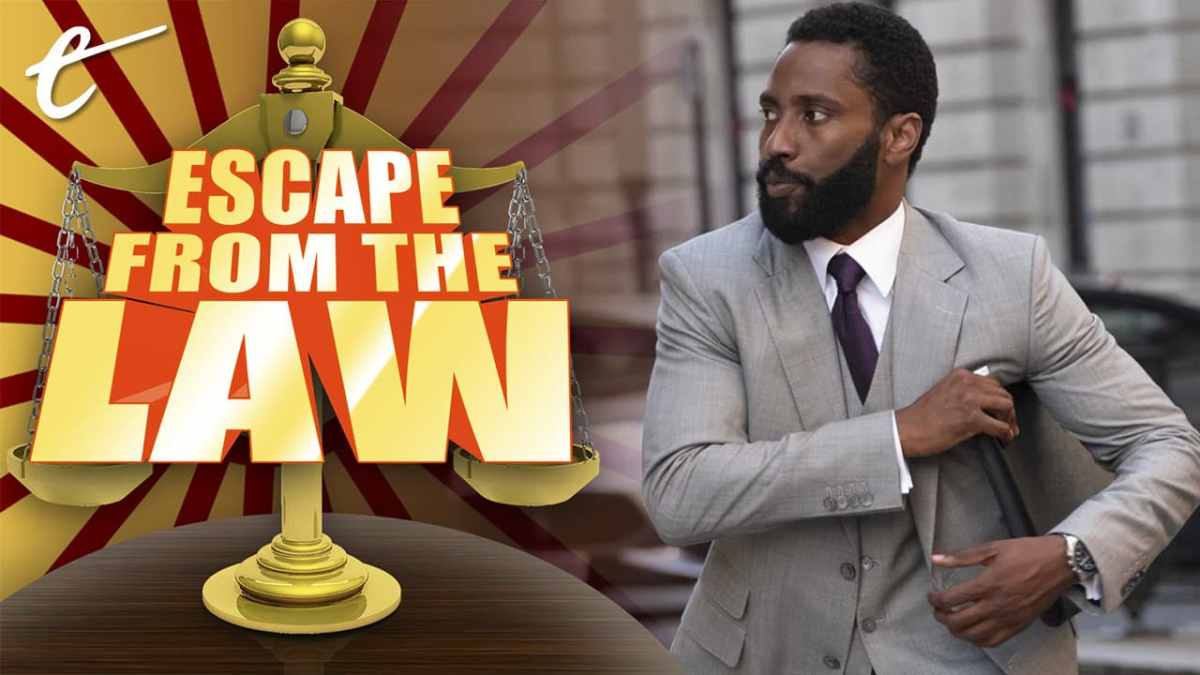This article contains no plot spoilers for Tenet, but it does explain its time travel mechanics.
The time travel mechanics in Tenet are not quite like anything I’ve seen before. While vaguely reminiscent of films like Primer, or the time turner finale of Harry Potter and the Prisoner of Azkaban, Tenet’s mechanics break their own ground.
The central conceit of Tenet is that the flow of time can be reversed for objects or people. When this happens, the affected objects travel backward in time, rather than forward. This process is fully reversible, such that the normal flow of time can be restored (and then reversed again) at any point. Of note, objects traveling backwards in time do so in 1:1 real time, with no time jumps.
Thus, a person who undergoes the “Tenet Treatment” at 9 a.m. and experiences an hour of subjective time will find him or herself at 8 a.m. It’s not like Back to the Future, where one can skip years, decades, or even centuries in the blink of an eye. A person seeking to travel back to 1955 would have to reverse time and live for 66 years before reaching their destination.
The other central feature of Tenet is that one cannot change the past — as the film explains, “What’s happened happened.” While it is possible to interact with others in the past, a time traveler cannot change what he or others have already experienced. In other words, there are no grandfather paradoxes here — you cannot kill your grandfather before you were born, as demonstrated by the fact that you were born.
So what does this have to do with criminal justice? As with most science fiction plot devices, Tenet’s time travel unlocks a world of unexpected and exciting possibilities. Let’s look at two of them.

The Victims of the Criminal Justice System
There are so many problems with the criminal justice system that it is nearly impossible to identify the worst problem. But a leading candidate in any discussion of the issue would have to be the harm that incarceration imposes on inmates’ families. More than half of the more than one million incarcerated adults in state and federal prisons have minor children. The harm of incarceration on families is hard to overstate. The families of inmates lose the love, companionship, parental guidance, and financial support of their incarcerated loved one. In their place are disillusionment, an increased likelihood that others in the family will turn to crime, shame, and increased risk for physical and mental health problems. These impacts are well documented and beyond dispute.
Tenet’s time travel can address this problem by allowing inmates to serve half of their time in reverse-time. What does this mean? Suppose Alice is convicted of wire fraud and receives a 20-year sentence. Under the current system, Alice would enter prison in 2021 and finish her term in 2041. However, if she could serve half of her time in reverse-time, she would finish her term in 2021 — perhaps on the same day the term began. Alice would simply spend the first 10 years, from 2021-2031, in normal time. Then in 2031, she would undergo the Tenet Treatment and live in reverse-time for 10 years, until the clock winds back to 2021.
To be clear, Alice will still have experienced 20 years of incarceration, and the criminal justice system will be no worse off with respect to its goals of deterrence, rehabilitation, or retribution. The experience for Alice’s family, however, would be markedly improved — Alice’s children would not lose their mother, Alice’s husband would not lose his wife, and so on.
There are, of course, a few wrinkles that would arise. For one thing, while families would not lose access to their loved ones from a time perspective, the fact remains that the incarcerated would still age and change — both physically and emotionally — during their term of confinement, such that the person who comes out may be markedly different than the one who went in. This could create additional problems for both the incarcerated and their families.

For example, a 5-year-old child may have trouble adjusting to the reality that their 28-year-old father suddenly turned into an old man, and a 28-year-old spouse might not relish the idea of their partner aging 20-50 years overnight. Likewise, it is easy to understand how it might be challenging for inmates (or anyone) to return to a phase of their life they haven’t experienced in decades.
Another wrinkle that may arise would be visitation. Under this system, there would be three versions of each inmate that could exist concurrently — the inmate in the first half of their term, the inmate in the second half of their term, and the inmate who has served their term. Thus, the loved ones would have to manage three different relationships at the same time, knowing full well that their interactions with one version could easily impact / did impact their relationship with a later version.
Imagine the wife who decides she wants to divorce her future-released husband two years after his “release.” Should she continue to visit her two incarcerated husbands after her divorce? What should she tell them? How would the divorce change her relationship with her about-to-be-released husband, who will have known about the divorce two years before his soon-to-be ex-wife? It’s hard enough to keep track of who knows what and when, which makes managing the emotional aspect of these interactions nearly impossible.
Of course, even accounting for the wrinkles and confusion, the world of Tenet Treatment incarceration is still an obvious improvement over the current system — having a weird, future-shifted family is better than having no family at all.

Tenet and Innocence Resolved by Time Travel
The second improvement to the criminal justice system is much more straightforward. The rules of Tenet time travel make clear that you can’t change the past. But you can use knowledge of the past to change the future. Thus, one cannot use time travel to go back in time to prevent a crime from taking place, but one can use time travel to go back in time to figure out how a crime took place and to identify the correct perpetrator. Wrongful convictions are another leading contender for the worst problem in the criminal justice system, and the Tenet Treatment provides a clean solution to this problem, since one could use time travel to definitively prove a defendant’s innocence (or guilt).
Even if time travel is not used, the fact that the Tenet Treatment can be used to send messages from the future to the past means that any later-discovered proof of a defendant or convict’s innocence (whether obtained through time travel or through traditional forensics) can be used to prevent a wrongful conviction or to support the early termination of an incarceration — but only if the incarceration was not itself responsible for the discovery.
Time travel can be pretty confusing, and it is often challenging to wrap your mind around the various paradoxes, scenarios, and simultaneous happenings of time travel stories. That is especially true with respect to the world of Tenet, which requires you to keep track of multiple frames of reference — and multiple perspectives within those frames of reference — simultaneously. Incidentally, the criminal justice system requires lawyers, judges, and policymakers to do the exact same thing — only instead of time reference frames, they are tasked to account for personal reference frames.

There is a major difference in how a prosecutor perceives a crime, conviction, and incarceration compared to how the loved one of the defendant perceives it. It is just as stark as the difference in how an event would be perceived by a forward-time-goer as compared to a Tenet-Treated-backward-time-goer (so to speak). Yet, in both situations, the underlying event is exactly the same.
The key in either case is for the affected parties to consider and account for the experiences and perspectives of others. To date, the criminal justice system’s failure to engage in that kind of thinking has caused significant harm to families of the incarcerated. Even so, if one thing is clear from Tenet, it’s that we have all the time in the world to set things right. And we don’t even need a Tenet time machine to do it.
To learn more about some of the problems faced by families of the incarcerated, check out Friends and Family of Incarcerated Persons, a nonprofit dedicated to the cause.





